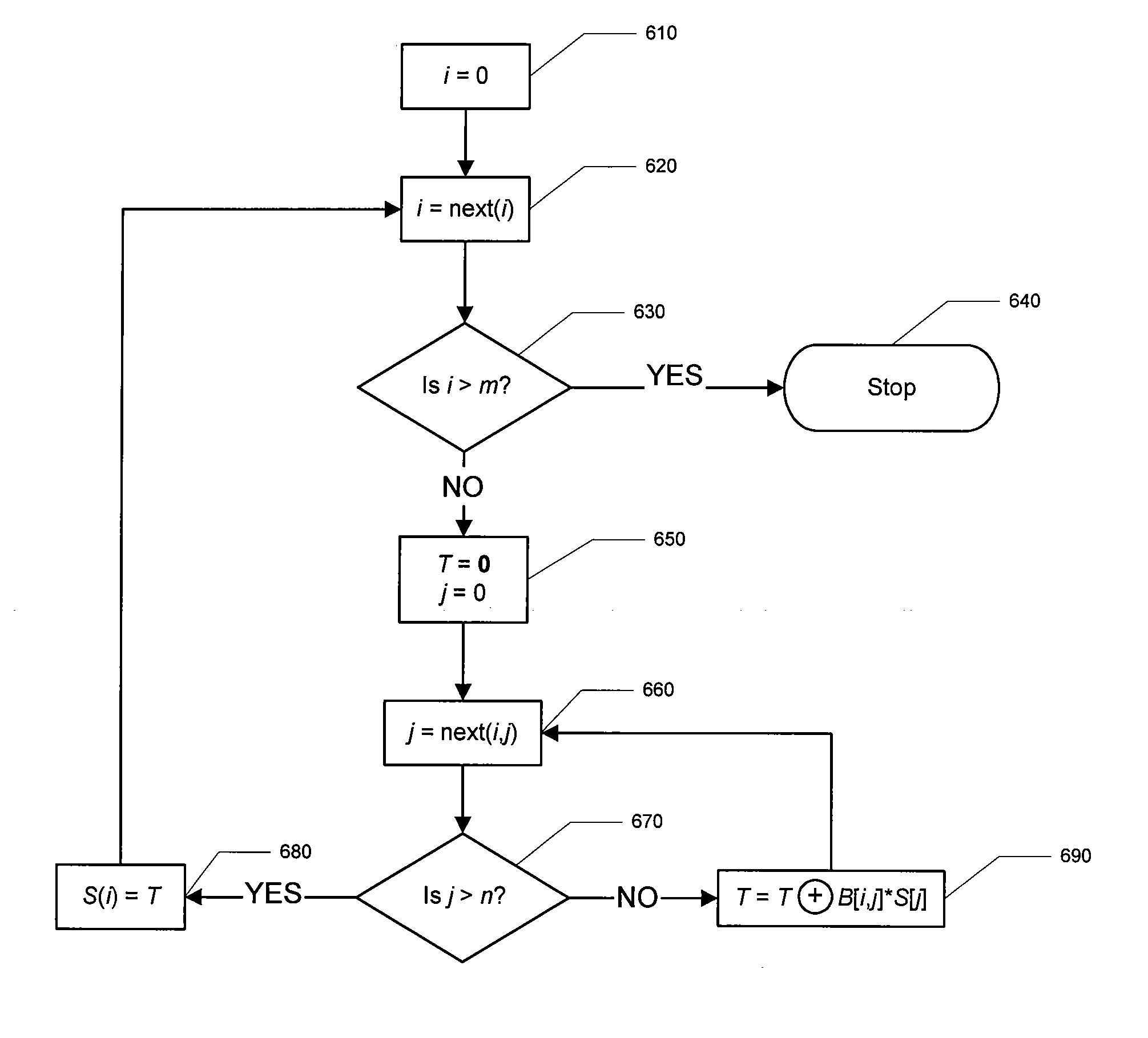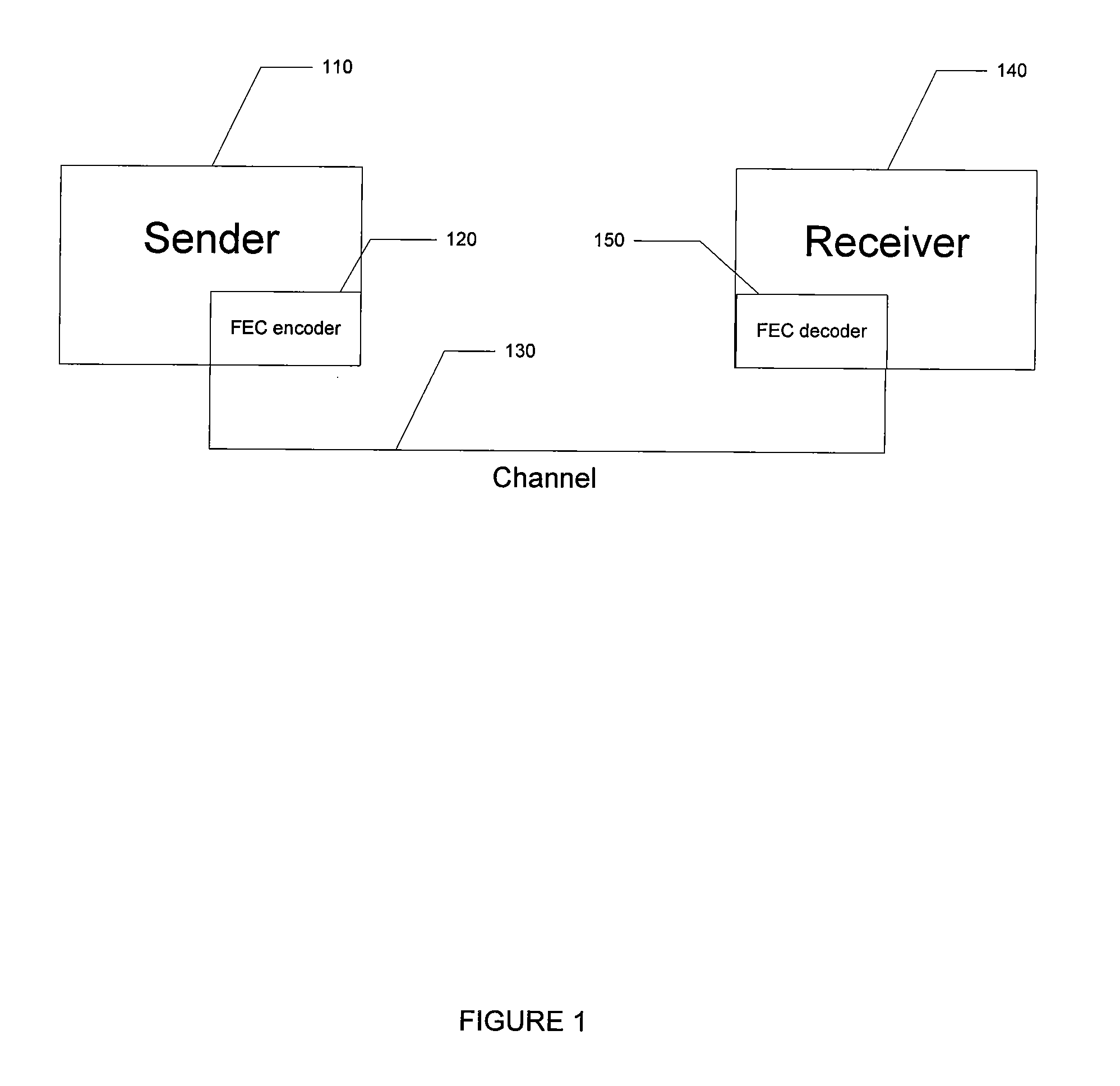In-place transformations with applications to encoding and decoding various classes of codes
a technology applied in the field of encoding and decoding data, can solve the problems of difficult implementation, large amount of additional memory needed for the decoding and encoding process,
- Summary
- Abstract
- Description
- Claims
- Application Information
AI Technical Summary
Benefits of technology
Problems solved by technology
Method used
Image
Examples
Embodiment Construction
[0041] Processes that substantially use the same memory for storing the received data and the decoded source block are often referred to as in-place transformations. Often times, the use of in-place transformations leads to a decrease in the running time of a particular process, as the process will spend less time accessing memory. This is particularly important because if the total size of the stored data is too large, then the processing unit may be forced to access secondary, slower, storage devices. Embodiments of the present invention use methods and processes for performing in-place linear transformations without requiring the use of extensive additional memory. These methods and processes are particularly applicable to FEC (forward error correction) encoding and decoding transformations of source blocks.
[0042] While the invention is applicable to many devices, not all are explicitly described herein. Examples, but not by way of limitation, include mobile telephones, computer...
PUM
 Login to View More
Login to View More Abstract
Description
Claims
Application Information
 Login to View More
Login to View More - R&D
- Intellectual Property
- Life Sciences
- Materials
- Tech Scout
- Unparalleled Data Quality
- Higher Quality Content
- 60% Fewer Hallucinations
Browse by: Latest US Patents, China's latest patents, Technical Efficacy Thesaurus, Application Domain, Technology Topic, Popular Technical Reports.
© 2025 PatSnap. All rights reserved.Legal|Privacy policy|Modern Slavery Act Transparency Statement|Sitemap|About US| Contact US: help@patsnap.com



